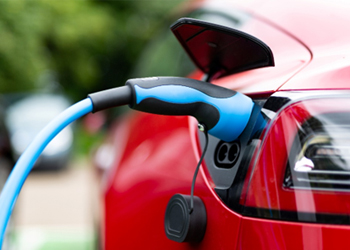 Installing Electric Vehicle (EV) home chargers and commercial chargers involves several steps and considerations. Whether you’re looking to install a charger at home or at a commercial location, here’s a general guide to get you started:
Installing Electric Vehicle (EV) home chargers and commercial chargers involves several steps and considerations. Whether you’re looking to install a charger at home or at a commercial location, here’s a general guide to get you started:
- Determine the Location:
-
- Home Charger: Decide where you want to install the charger at your home. Common locations include your garage or driveway. Consider the distance from the electrical panel and your EV’s parking spot.
- Commercial Charger: Select the location for your commercial charger. Consider factors like visibility, accessibility, and proximity to parking spots.
- Electrical Capacity Assessment:
-
- Home Charger: Assess your home’s electrical capacity. You may need to upgrade your electrical service to accommodate the charger, especially if you have an older electrical panel.
- Commercial Charger: Conduct a load analysis to ensure your commercial location can support the charger’s electrical demand. This may require coordination with your utility company. Consult with your electrician to assist with this.
- Choose the Charger:
-
- Select the EV charger that suits your needs. Consider factors like charging speed, compatibility with your EV, smart charging features, and durability.
- Hire a Qualified Electrician:
-
- It’s important to hire a licensed electrician for the installation. They will be responsible for safely connecting the charger to your electrical system. MB HAYNES Installs and Services EV Charger (Link to: https://www.mbhaynes.com/haynes-electric/#residential) Additionally, MB HAYNES will assist in navigating the other factors outlined in the steps listed in this article.
- Permits and Regulations:
-
- Local building codes, zoning regulations, and any permitting requirements for installing an EV charger need to be checked. This step is essential to ensure your installation is compliant with local laws. MB HAYNES is here to assist with this.
- Charger Installation:
-
- This involves an electrician to run the necessary electrical conduits, wiring, and any additional equipment needed to support the charger. For commercial chargers, this might involve setting up multiple charging stations and associated infrastructure.
- The electrician will need to securely mount the charger at the chosen location.
- Electrical Connection:
-
- The electrician will connect the charger to your electrical system. This includes configuring the voltage and current settings as per the charger’s specifications.
- Testing and Inspection:
-
- The electrician will need to test the charger to ensure it is functioning correctly. Schedule inspections as required by local authorities to certify that the installation meets safety standards.
- Set Up Billing and Management (Commercial Chargers):
-
- If you’re installing commercial chargers, set up a system for billing and management. This might involve integrating with a network or software for user access and payment.
- User Education:
-
- Provide information to users on how to use the charger, payment methods (if applicable), and any unique features of the charger.
- Maintenance and Ongoing Monitoring:
-
- Regularly maintain and monitor the charger to ensure it continues to function correctly.
It’s important to remember that both home and commercial installations require a qualified electrician to handle the electrical work. Additionally, working with a reputable manufacturer and ensuring compliance with local regulations is essential for a successful installation. The process and requirements may vary depending on your location and specific needs, so consult with professionals and local authorities for guidance.
